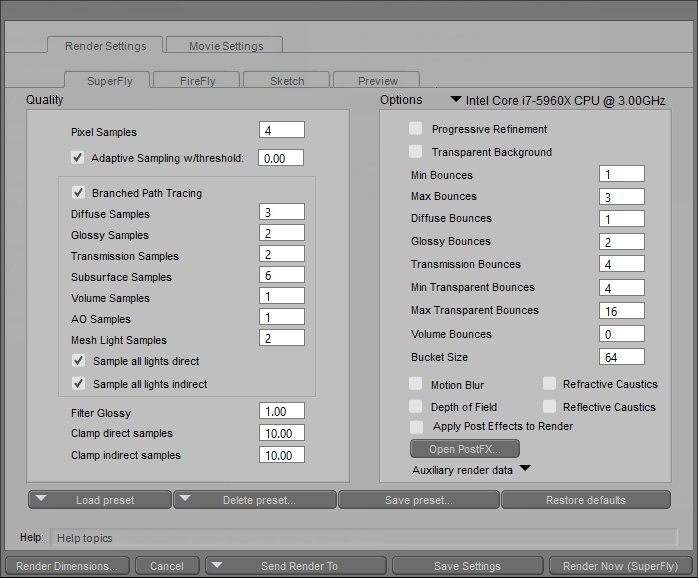

These lights are located in your Light folder under IDLight. ID-Light comes with preset light separates to make things a little easier. Now on retuning to the "Pose Room" you will probaly want to add some directional light to your scene. This folder contains preset materials for the sphere and simply clicking the "Apply Library Preset" button will change the colour produced by the sphere. If you wish to change the default image navigate to you materials folder of your runtime and find the IDLight folder. Once in the material room you will notice the sphere has an image attached to it. Located in the "Props" folder is a sphere named "EnviroSphere" This sphere is set up for use in IDL lighting and once loaded using the "Apply Library Preset" option you will need to enter the "Material Room". The result you get from IDL is a realistic one and means there is no need for Ambient Occlusion. If you continue to use the settings I normally use you will have very long render times and quite frankly not much better results.Īn environment sphere allows IDL to work the way it was designed to by trapping light rays within a certain area and allowing them to bounce around. This means getting the best quality at the best possible render time. These setting are different to my usual advised settings and I have found them to be the best settings for a balanced outcome. Regarding render settings, I advise using the following settings. To use the IBL lights included in ID-Light in conjunction with IDL all you have to do is follow Method one and then before rendering ensure your IDL box is ticked. Since Poser 8 there has been the option to use IDL, this option can be toggled in the Render settings and is a simple tick box. Method two-IBL and IDL (for Poser 8 onwards)Īlthough not the traditional method of using Indirect lighting, Poser can use an IBL light to illuminate the scene rather than the more usual Environment Sphere method. Using these lights is very easy, once located in your runtime you click "Apply Library Preset" and there you have it, pre-made lighting that you can use as it is or add extra lights depending on your desired result. These IBL lights give different results but nevertheless are a great way to get excellent renders fast. ID-Light includes several IBL(Image Based Lights) which are created using the same images as the IDL set ups use. Method one- IBL lighting(used in Poser 6 onwards) If you do however have Poser 8 onwards you have the extra benefit of using IDL. The results in Poser 6 and 7 however will vary considerable from Poser 8 onwards. If you do not have ID-Light you may be able to follow some points and still understand but some points need props and settings only included in the ID-Light product.įirst of all this collection of lights can be used without the use of IDL (InDirect Light) which means you can use the product with Poser 6 and onwards. I will guide you through three methods of using my new Product ID-Light. In this case, you could set bucket size to, say, half the largest image size.Thank you for visiting my blog, I hope you will find this tutorial useful. Assuming you have sufficient VRAM, this is the most optimized GPU setup, since VRAM is way faster than RAM, and the GPU have much faster access to it.Ĭonversely, if you don't have enough VRAM, you can still break the scene in the fewest number of parts to make it faster on the GPU. I personally like to to set bucket size to the largest image size to render the entire scene in one pass using the GPU.


If you don't have much RAM, use smaller bucket sizes.īucket size also helps optimizing GPU renders in Superfly if you have enough VRAM in your video card. This also helps dealing with large texture maps that wouldn't fit in memory all at the same time. What it does is break the image into smaller "buckets" and render each on their own like a mosaic, so only a small part of the scene is handled at any given moment. I think bucket size is about allowing people to render images of any size, even in computers that don't have enough RAM and VRAM to handle the entire scene.


 0 kommentar(er)
0 kommentar(er)
